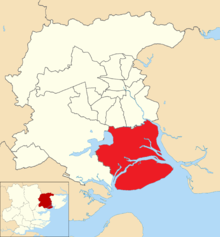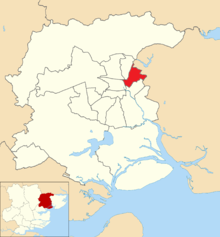2016 Colchester Borough Council election
Elections to Colchester Borough Council took place on 5 May 2016. Colchester Borough Council normally elects one third of its councillors each year, however, due to boundary changes, the whole council is up for election.
Prior to this election, the cabinet (8 seats) was held by a coalition including the Liberal Democrats (5 seats), the Labour Party (2 seats) and a Highwoods & Stanway Independent (1 seat). Paul Smith (Liberal Democrat), a councillor from St. John's ward, was elected Leader of the Council by 32 to 28 votes.
Following the 2015 election the Liberal Democrat-Labour-Independent coalition maintained control of the Council, although with a much reduced majority (14 to 4). The Liberal Democrats suffered heavy losses in North and West Colchester with 4 councillors being unseated, all by the Conservative Party. The Conservatives subsequently became the largest party on the Council but short of a majority by 4 councillors.
Although failing to win additional seats, the Labour Party made moderate gains in vote share across the Borough. Following a promising performance at the 2014 election, the UK Independence Party failed to build on their success and lost in vote share across Colchester, failing to take a single ward. Like UKIP, and despite a notable boost in local and national membership, the Green Party of England and Wales also fell in vote share and failed to win any seats. However, both UKIP and the Green Party received the highest number of votes for their respective parties in a Colchester local election.
Prior to the election, Independent member for Stanway, Laura Sykes, resigned her post as Borough Councillor due to moving away from the area. This left the ruling coalition with a majority of 3 over the Conservative group.
A boundary review was undertaken throughout 2014/2015 as part of a review of local authority electoral wards. The new electoral wards have taken effect from this election reducing the number of councillors by 9 (from 60 to 51), reducing the number of wards by 10 (from 27 to 17) and standardising the number of councillors representing each ward (3 councillors per ward). Each ward is designed to contain approximately 8,000 electors, taking into account the projected population growth over the next 10 years.[1]
















